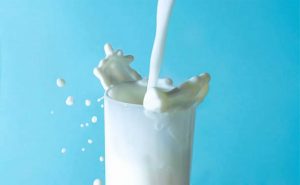Let’s go to the problem’s core, detailed by USDA in responses to the Pennsylvania-based weekly dairy paper Farmshine.
The USDA explained that, “The blend price (Statistical Uniform Price or SUP) is a weighted average of the uses of milk that was pooled for the marketing period (month). If some ‘higher value’ use milk is not in the ‘pool’, then the weighted average price will be lower.”
But the USDA response points out, “It is important to note that the Class III money still exists in the marketplace. It is just that manufacturing handlers are not required to share that money through the regional pool.”
Translated into farmer talk, the above paragraph means that any month(s) the milk buyer/processors depool Class III (cheese) milk, the farmer may receive whatever that milk buyer feels like paying.
Forget trying to explain this grand larceny. Instead, let’s propose details for a fair USDA milk price oversight.
Quit worshiping the false god of fluid milk sales
We don’t need four Classes of milk use. Two will suffice. Class I should include all farm milk processed into fluid milk, cheese, and yogurt. And Class II should simply be all other uses.
Federal milk orders’ original purpose was to assure adequate supplies of farm milk for fluid processors. But fluid sales have deteriorated dramatically, while per-capita cheese demand has slightly more than doubled since the late 1970s. Look at consumer dollars generated by fluid milk, cheese and yogurt sales, plus their by-products.
Fluid milk money: Let’s say there are 11 gallons of fluid milk per hundredweight, with a total four pounds of cream (50% milk fat) and its liquid carrier (water) removed. Fluid milk’s average fat content is 2 percent. Two pounds of milk fat are skimmed from each hundredweight of fluid milk processed. Do the “fluid milk math” – 11 gallons at $4 each + $4.25 in cream sales. Gross value: Approximately $48.25 per hundredweight.
Cheese milk money: 85-90% of Wisconsin’s farm milk goes into the cheese vat. If we modestly estimate retail Cheddar cheese prices at $5.00/lb., 9.6 pounds of Cheddar per hundredweight of farm milk would shake out $48 from shoppers. Then add a couple dollars of value for the whey – for a total of $50 gained from 100 pounds of farm milk processed into Cheddar.
Yogurt milk money: The standard size of a consumer yogurt cup has been shaved down to 5.3 ounces. Thus, 100 pounds of farm milk would yield 300 cups of 5.3-ounce packages. A very modest fair price for a 5.3 oz. cup of plain, conventional (not Greek) yogurt might be $.60 to $.75 each. That means each 100 pounds of milk processed into plain yogurt generates $180 to $225. Wow! From these estimates, milk processed into fluid or conventional cheese yields about the same end-dollar amounts. And dollars generated by yogurt sales would make Al Capone envious.
Regulatory realities
At least four regulatory requirements are critical for creating two milk classes:
A common butterfat differential, regardless of use;
Up-charging nonfat dry milk (and other legal, domestic dairy solids) used to process fluid milk, cheese or yogurt. It is very common to use nonfat dry milk and condensed skim for making cheese and yogurt. Under a two-class system that includes cheese and yogurt as Class I products, up-charging nonfat used in those products would regain some of the money lost from current Class I differentials.
Quit forcing farm milk buyers to serve fluid milk processors’ needs. Big co-ops have used fluid milk shipping requirements to force other marketers to kow-tow to their dictates. Let fluid milk processors compete on the open market. That way, incentives would be to for fluid milk processors to line up the most efficient milk supply needs … and eliminate sticky-fingered cooperative marketing agencies.
No depooling!
How many federal milk orders?
We don’t need 11 regional federal milk orders. One national milk order would be easiest, of course. If there were two FMMOs, making the Continental Divide the line of demarcation would be simplest. Three orders? I think that Florida’s yo-yo seasonal trends of milk production and consumer demand make Florida a special situation – best managed by Floridians.
The 1996 federal farm legislation – spearheaded by then Wisconsin congressman Steve Gunderson – ordered USDA to reduce the number of federal orders down to 14 or less. Twenty-five years later, we’re overdue to again revise milk order rules and maps. (The Walmart fluid milk plant in Fort Wayne, Indiana currently distributes packaged fluid milk in four federal milk orders. That’s a clear example showing how recent events render multiple regional federal milk orders outdated.)
From chaos, will new “order” prevail?
Current milk pricing chaos may spawn improved federal milk regulation. The American Farm Bureau Federation (AFBF) has been studying changes to federal milk orders for the past year — polishing its proposals for the next federal farm bill debate. AFBF is an important, political counter-weight to the big dairy cooperatives, which have literally “milked” current federal milk order rules for their own gain. The National Farmers Organization is also mulling regulatory changes for FMMOs.
The current federal milk regulation has failed. June 2020’s disappearing milk check money has completely soured dairy farmers’ perceptions of the system. Farmers produce milk during a given month with no idea what they’ll be paid. It’s time to honestly pursue better ways to regulate and price milk – a process that’s too important for the big cooperatives.
In the near future, when USDA releases its June 2020 “mailbox” milk pries, we can better “guess-timate” how much Class III milk money was withheld from producers’ milk checks at the discretion of Class III milk marketers and processors. Eighty five to 90% of Wisconsin’s farm milk goes into cheese vats. Thus, finding a better, fairer system for valuing farm milk is essential for the survival and prosperity of our dairy farmers and rural Wisconsin.
The “same-old, same-old” business as usual is ruinous.













